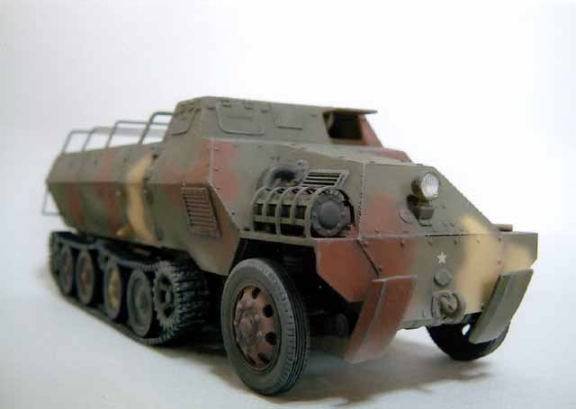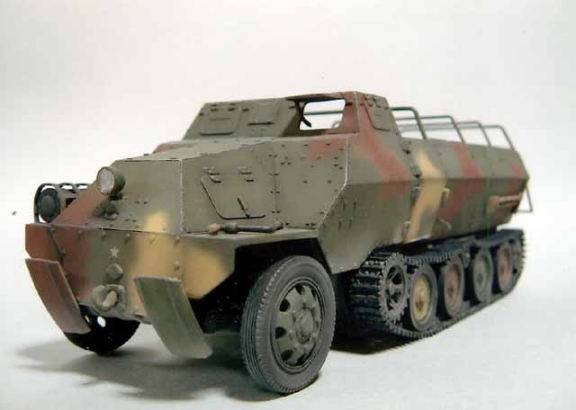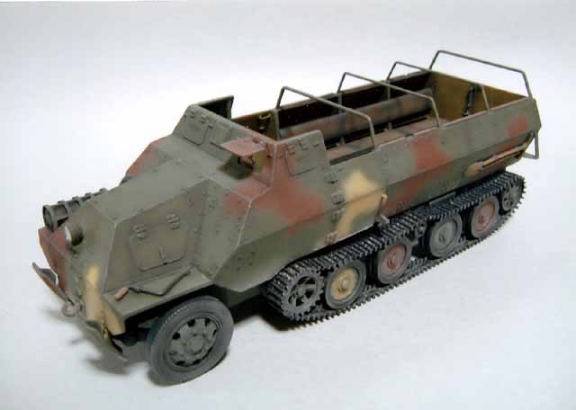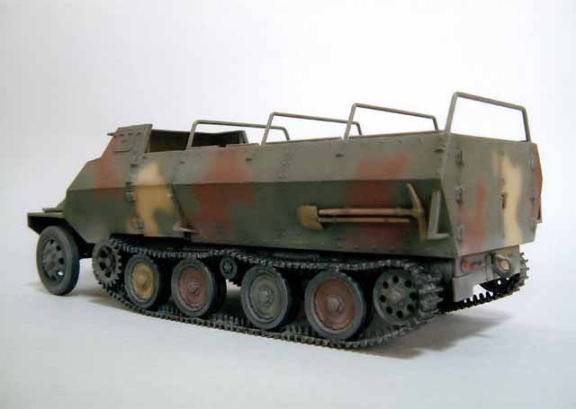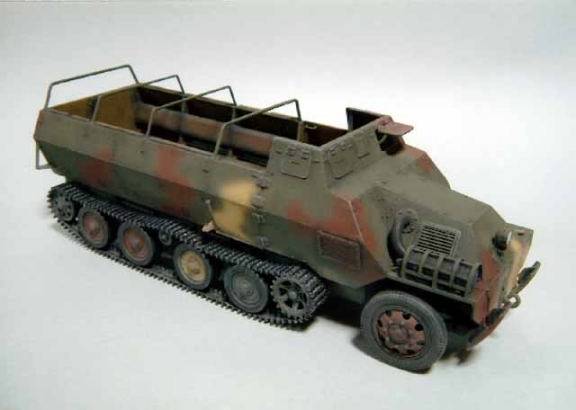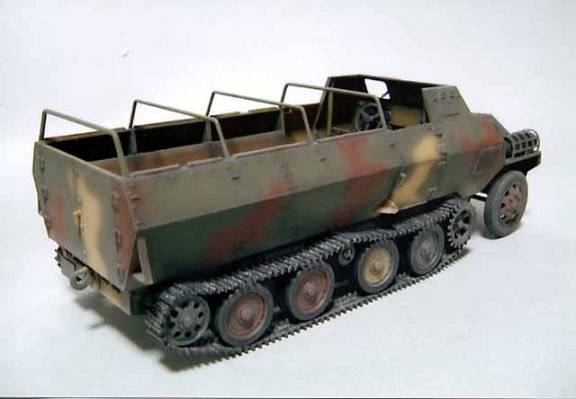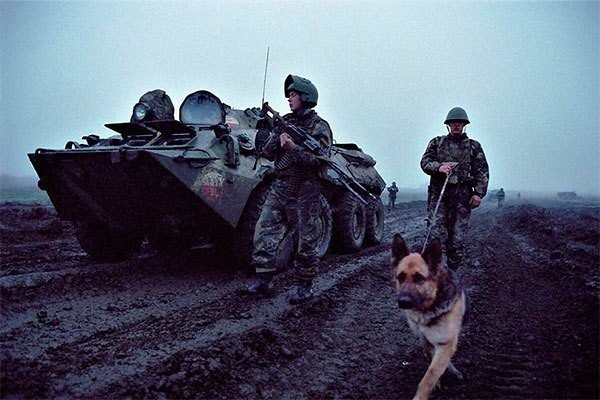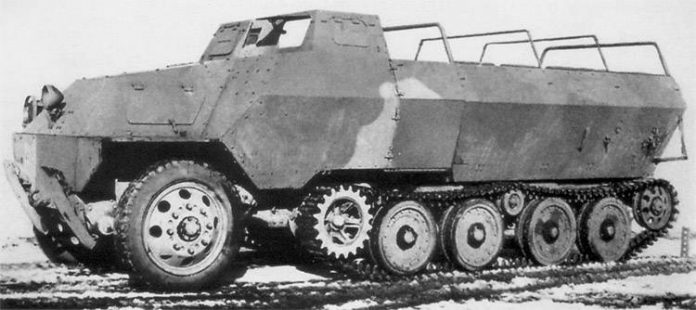
Japan lagged significantly behind in terms of development of their armored vehicles as the enemies - Americans, the British and the Soviet Union, and ally - Germany. With one exception.
Japanese armored personnel carriers, apparently, It was the best of the production vehicles in its class, although produced in small quantities, and on the war really "did not have time".
The first and the last sample
AT 1940 The imperial army was decided that, the need to sharply intensify the work on creation of the APC for the army units. It was believed, that in some areas of China, all-terrain armored infantry transporter, from which more and you can fight, It is the optimal transport and combat vehicle.
Generally speaking, Japanese considered optimal for infantry transport trucks, instead of special machines, The latter allows you to carry out the maneuver forces significantly faster than any potential APCs, and it costs less, both in production, and in operation. But the destruction of roads on long fights, Chinese activity in various guerrilla raids, and generally poor condition of the road network in some parts of China, until its complete absence of increasingly demanding special machines.
TO 1941 year "Hino" engineers created the first and last Japanese armored personnel carrier, later put into service as a "Type-1" or "Ho-Ha".
APC has been created in view of the German experience, and perhaps the French - "Yellow Cruise" Asia half-track "Citroens' in 1931 He was blaring all over the world and it is unlikely the French experience was completely ignored. US M2 Halftrack Japanese first saw already in the Philippines, but about them "Hino" engineers could learn before. but, copies of which a foreign car, "Ho-Ha" is not, representing an original design, much more successful, than German and French, and, by and large, more successful than American APCs.
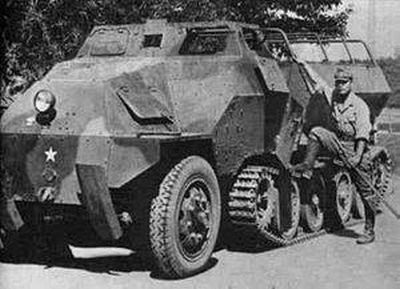
The success of the first BTR Japanese were not able to develop - the war demanded more resources for the Navy and Air Force, on ground troops remained at least. But the "Ho-Ha" and so was quite successful BTR.
The machine was equipped with a 6-cylinder diesel engine air cooling capacity 134 HP. at 2000 rev / min. Transmission had a long propeller shaft, because, that the transmission axle track located almost immediately after the transmission was firmly attached to the body.
Caterpillar has a long enough, to minimize the pressure on the ground (plus compared to the M2), It was a metal (Again a plus compared with M2 and "French") and I did not have a terrible needle bearings, and, respectively, hundreds of lubrication points, the German tracks have numerous "halbkettenfartsoyg" Wehrmacht.
The front of the machine bridge was non-leading - but given the length of the crawler did not matter. But the value was the presence of a simple independent suspension of each wheel. Simpler, than the Germans, more favorably offroad, than Americans.
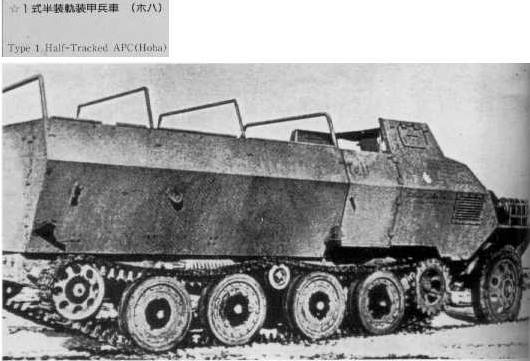
The crew was 1-2 a person with a driver, and 12 marines, placed along the boards on the benches. Armament - according to some American sources, three tank 7,7 mm machine gun "type 97", two of which were intended for firing at ground targets forward at an angle to the direction of travel (right and left), and a third part housed in the rear compartment and landing used as zenith, without the possibility of firing at ground targets. Unfortunately, check it's impossible, photo machine with arms in the public domain is not.
armor Thickness varied from 8 to 4 mm, but the armor had a rational angles, The security offered greater machine. Troopers can use for landing landing as many as three doors - one at each side and swing gates in the feed broneliste. Like all analogues of those times, top was open, and weather protection awning used.
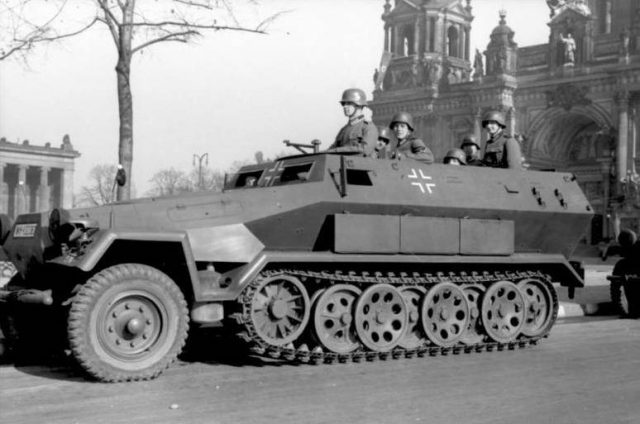 German Sd.KFZ 251 - one of the serial analogues
German Sd.KFZ 251 - one of the serial analogues
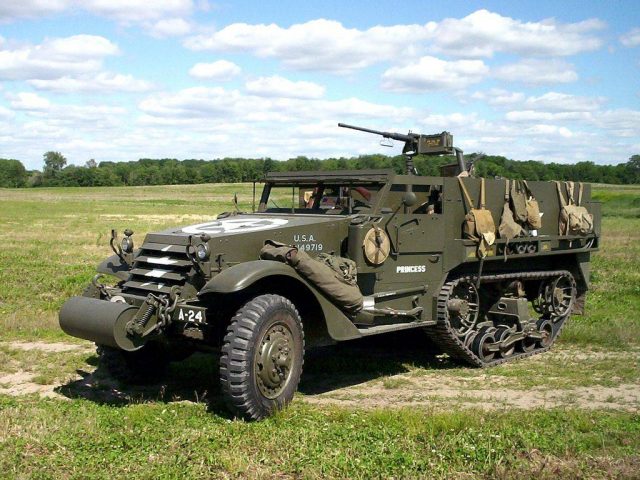 American rival - White M3. In an embodiment of prime mover M2, he was familiar with the Japanese war began
American rival - White M3. In an embodiment of prime mover M2, he was familiar with the Japanese war began
AT 1942 , the car adopted a, but production has been possible to start only 1944, when the war was clearly lost. A certain number of armored personnel carriers still produced, but a serious influence on the course of the fighting due to the small number and nature of the ground war in the Pacific, they did not have. A certain number of armored personnel carriers were transferred to China.
Yet some were sent to the Philippines, but the goal came a little, a significant portion went down with the courts, which they brought. Even a small amount left on the Japanese islands in parts, who had to battle with American troops. There they found and surrender. After the surrender of Japan, part of APC was converted to civilian vehicles and used for reconstruction.
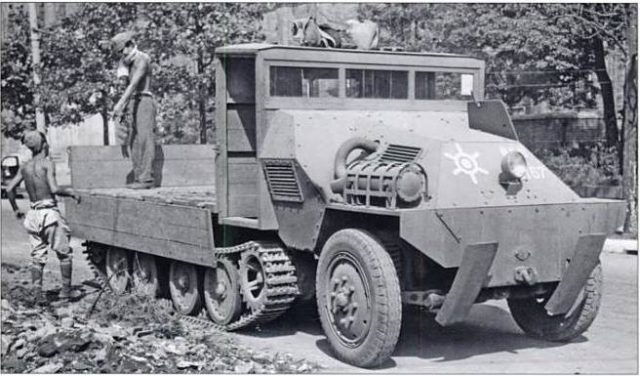 At the post-war ruins. BTR, converted into a truck
At the post-war ruins. BTR, converted into a truck
not known exactly, as APCs was released, but, apparently, Little.
Unfortunately, in English-language sources, there is no more or less detailed descriptions of the machine, leaving "gaps" in knowledge about the technical part - so no information about, whether the APC is equipped with a dual-differential, what he had gearbox or MTBF main units.
We only know, that the same engine used on the crawler armored art.tyagache "Ho-Ki" and showed rather well. we know, that often in armored vehicles of the same class, by weight, and power was applied 4-speed gearbox.
We also know, that in principle the Japanese engineers were able to build semi-tracked chassis, for example, "Type 98" "Co-Chi" was quite successful machine, Again, more rational in many respects, than their Western counterparts. Finally, Japan - the only country to mass produce civilian polugusenichniki many years after the war (though light), it's about something so says.
It should be considered, that the quality level of the car was more or less acceptable.
what, but, advantage over similar products of APC?
Made to fight
"Ho-Ha" as an armored personnel carrier was superior serial counterparts.
At first, more successful layout. The machine has a small distance between the front axle and the drive roller, what, to some extent, reduces the turning radius. We can say with confidence, that he no longer, M2 than in the US, even in the absence of dual differential, but M2 itself is less successful transmission, it is essentially a truck "White Indiana", who once instead of the rear axle attached a rubber-tracked truck with caterpillar, at first, very unreliable. Metal track "Ho-Ha" and "tank" rollers look much more appropriate to combat vehicle.
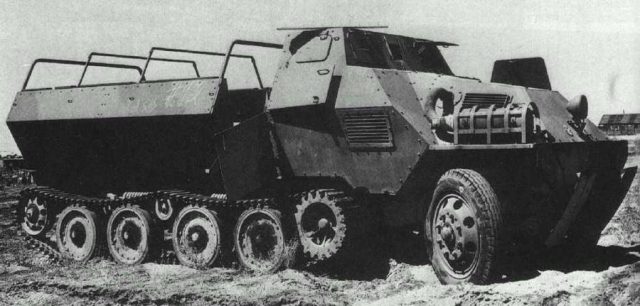 Location of the side doors. Infantry was quite convenient through them to dismount
Location of the side doors. Infantry was quite convenient through them to dismount
BTR roomy enough, that in it without crowding housed infantry compartment with ammunition and food supplies, if necessary pulomotami or other collective weapon. At the same time ensured that, which was not in any of the analogues - the possibility of dismounting the landing zone in neprostrelivaemuyu. The German Sd.kFz 251 output for landing was just aft, And the doors were made uncomfortable and, usually, infantry jumping over the rail.
The American M3 exit was convenient, but also just aft and through a narrow door on one person. The "Ho-Ha" outputs there were three, and everything is very convenient to do, with the rear gate was wide enough for a quick dismounting of troops in the two streams, side doors were already, but a single fighter with equipment passed through them quickly and easily, and planning troop compartment is not hindered output. Troopers "Ho-Ha" could be in the area at any neprostrelivaemoy case scenario, except armored enemy fire from three sides. In combat, all this could make a huge difference.
Although the frontal armor "Ho-Ha" was thinner, What Americans, but the angles of inclination is partly compensated, that before the German APCs, there body tilt angles have limited the placement of troops, which was not the Japanese machines.
Placing the machine guns on the "Ho-Ha" (if that, we know - the truth) It can not be considered a failure - in the attack in order of battle in armored vehicles blocked the unit space before the next car fire their guns, in a pinch, Troopers could fire forward at the rate of personal weapon or machine gun, if any. But the presence of anti-aircraft machine gun on a special machine was unequivocal advantage both in repelling air strike, and when driving in the city or mountains.
For travel distance on one refueling Japanese BTR roughly corresponded to US counterpart, and significantly superior to German.
As mentioned, Japanese armored personnel carriers had the most successful among all the crawler gear analogues.
The front independent double wishbone suspension spring "Ho-Ha" utterly superior off-road suspension dependent spring US armored personnel carriers and significantly - suspension on the transverse springs, which had German. In this case, there is no reason to believe, that the front axle of the American armored personnel carriers would have given him some advantages in the terrain in front of the Japanese armored personnel carriers - tracked thoughtful course of "Ho-Ha" looks better in fact "halftreka" automobile chassis from which the rear axle instead of the compact track cart.
only mode, when in theory American could be better - climbing the slope of loose sand. But it is not fact, we do not know exactly, how the Japanese tracks was thought grouser, if there was a well thought out, the American car could lose here.
air cooling the diesel engine explicitly less fire hazard, than gasoline engines competitors, and easier to maintain, Recently, though, and not fundamentally. It is also slightly more tenacious in battle. It is also a plus for the battle machines.
According to the "Ho-Ha" specific power quite a bit inferior to the American APC, and slightly higher than the German.
For ease of maintenance Japanese BTR probably too champion - the first Americans were really the problem with the crawler progress, that to the Germans and their necessity of lubrication of each hinge between Tracians (with needle bearings!) it is generally beyond good and evil.
According okopohodimosti "Ho-ha" is not inferior to Sd.kFz 251 and are guaranteed to outperform the "Americans" - is evident from the length of the track roller in each of the machines.
We should also note the advantage of Japanese armored personnel carriers as controls before the German - terrible decision to reverse tilt steering on Sd.kFz 251 is the standard of, as it is impossible to do. The Japanese APC controls are much closer to the normal road.
All of the above leads to the conclusion, "Ho-Ha" at least one of the best, and most likely the best serial Armored World War II. We can only regret, that none of them has survived to the present day. It would be interesting to compare it with "classmates".
But one thing is clear, and so.
Bonus - modelka, made a very accurate and close to the original, It gives an idea of the appearance of the car better, preserved than most photo.
Specifications:
Weight: 9 tonnes
body Length, mm: 6100
Width, mm: 2100
Height, mm: 2510
booking:
type of armor - steel rolled
housing forehead, mm / city.: 8
body board, mm / city.: 4—6
weaponry:
Shotgun: 3 × 7,7-mm
Mobility:
Engine Type - 6-cylinder two-stroke diesel air cooling
Engine power, l. from.: 134 at 2000 rev / min.
Road speed, kmh: 50
Cruising on the highway, km: 300
Manufacturer: "Hino".
/Alexander Timohin, topwar.ru/






